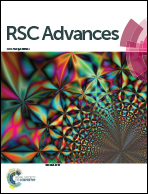Accessible fabrication of Bi2MoO6/BiOCl for effectively conducting thermally-responsive catalytic decontamination of model pollutants
Abstract
Bi2MoO6/BiOCl (BMB) with thermally-responsive catalytic properties was synthesized by a one-step hydrothermal approach under a low-temperature environment. The influence of initial concentration, reaction temperature, pH, and ions on the thermally-responsive catalytic degradation of methylene blue (MB) was systematically investigated. The experimental evidence shows that an excellent thermally-responsive catalytic activity on decomposing MB is found using BMB under low-heat excitation. Diverse ions introduced toward bare solutions could significantly improve the succeeding degradation effect. The degradation products from thermally-responsive catalytic reactions were identified by GC-MS, demonstrating that this pattern possesses a substantial ability to achieve the destruction of water pollutants. Recycling evaluation reveals that the total degradation rate of MB over BMB remains at a level of >70% even after three use cycles, implying that BMB could be reused without severe loss of activity. A rational mechanism responsible for deteriorating pollutants is also proposed. Accordingly, BMB triggered with heat may provide a viable alternative catalyst for the abatement of organic contaminants from future chemical industries.


 Please wait while we load your content...
Please wait while we load your content...